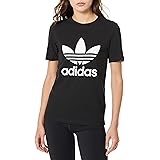Do you really need the most expensive golf balls to truly elevate your game? Our insightful video above, featuring “The Frugal Golfer,” certainly challenges this common assumption. It boldly declares that premium golf balls, like the popular Pro V1, might be heavily overrated for the vast majority of players. This perspective sparks a crucial conversation: are you paying for performance, or simply for the brand name?
For many recreational golfers, the idea of spending $55 for a dozen high-end golf balls feels like a significant investment, especially when a few inevitably find their way into a water hazard or dense rough. Let’s delve deeper into why this mindset prevails and explore if budget-friendly options can offer comparable performance without breaking the bank.
1. The High Cost of Premium Golf Balls: A Reality Check
The speaker in the video makes a strong point: a dozen Pro V1s can set you back around $55, meaning each golf ball costs approximately $4.50. This price tag is justified by manufacturers due to advanced technology, multi-layer construction, and rigorous quality control. However, for a casual golfer who might lose several golf balls during a single round, this quickly adds up to an expensive day on the course.
This high price point often leads to undue pressure. Golfers might feel compelled to play perfectly with an expensive ball, rather than focusing on enjoying the game. The psychological impact of losing a $4.50 golf ball can be more detrimental than the actual stroke added to your score.
2. Understanding Golf Ball Construction and Performance
To truly understand whether premium golf balls are ‘overrated,’ it’s essential to grasp what differentiates them. Most golf balls consist of a core, one or more mantle layers, and an outer cover. Each component plays a crucial role in the ball’s overall performance characteristics.
The Core: Speed and Distance
The core is the engine of the golf ball. It’s typically made from rubber and its compression level greatly influences initial ball speed and overall distance. High-compression cores are designed for golfers with faster swing speeds, providing maximum energy transfer. Lower-compression cores are often better for slower swing speeds, helping to get the ball airborne and achieve respectable distance.
Mantle Layers: Feel and Control
Between the core and the cover, mantle layers contribute significantly to the feel of the golf ball. These layers can influence spin rates and provide a firmer or softer sensation at impact. A golf ball with multiple mantle layers allows engineers to fine-tune its performance across different club types.
The Cover: Spin and Durability
The cover material is perhaps the most critical factor for short-game performance. Urethane covers, found on premium golf balls, are softer and provide superior spin around the greens. This allows skilled players to stop the ball quickly or even draw it back. Ionomer or surlyn covers, common on more affordable golf balls, are more durable and generate less spin, which can be advantageous for reducing slices and hooks, although it means less control on delicate shots.
3. When Do Premium Golf Balls Truly Matter?
The video poses a pivotal question: “Unless you’re a scratch golfer or sponsored, why are you dropping $4.50 a ball…?” This highlights a key truth about premium golf balls. Their advanced features are primarily designed to benefit golfers who possess a highly consistent swing and exceptional short game control. For these players, the subtle differences in spin, feel, and trajectory offered by a Pro V1 or similar ball can translate into saved strokes.
For the average golfer with a handicap above 10 or 15, the nuances of a urethane cover for generating extra spin on a wedge shot are often negligible. Factors like consistent contact, proper club selection, and course management will have a far greater impact on their score than the specific brand of golf ball they are using. Losing a high-spinning, soft urethane ball often negates any potential benefit it might have offered.
4. Exploring High-Performance, Affordable Golf Ball Alternatives
Fortunately, the golf market has seen a surge in excellent, value-driven golf balls that deliver impressive performance without the premium price tag. The Frugal Golfer specifically mentioned Kirkland, Vice, and Maxfli Tour, and these brands exemplify the quality available. These alternatives often utilize innovative construction to mimic the feel and distance of more expensive golf balls.
Kirkland Signature Golf Balls
Costco’s Kirkland Signature golf balls have gained a cult following for their exceptional value. Often available at less than half the price of premium brands, they feature a multi-layer construction and urethane cover, offering impressive spin around the greens and good distance off the tee. Many golfers find their performance comparable to much more expensive options.
Vice Golf Balls
Vice offers a range of direct-to-consumer golf balls, cutting out retail markups. Their models, like the Vice Pro and Vice Tour, provide urethane covers and advanced core designs for excellent feel and spin. Buying in bulk can further reduce the per-ball cost, making them a popular choice for golfers seeking premium performance on a budget.
Maxfli Tour Series
The Maxfli Tour series has also emerged as a strong contender in the value category. These golf balls are designed to offer a blend of distance, feel, and spin comparable to premium brands, but at a significantly lower price point. They often feature urethane covers and multi-layer constructions aimed at golfers looking for performance across all aspects of their game.
Other notable contenders in the affordable golf balls segment include offerings from Srixon (e.g., Q-Star), Callaway (e.g., ERC Soft), and Bridgestone (e.g., e6). These brands provide various options, from soft-feeling, low-compression balls to those designed for maximum distance, all without the top-tier price tag.
5. How to Choose the Right Golf Ball for Your Game and Budget
Selecting the best golf ball is a personal decision, but it doesn’t have to be dictated by price. Here are some key considerations for finding the perfect match:
Your Swing Speed
Faster swing speeds (above 100 mph) generally benefit from higher compression balls for maximum energy transfer. Slower swing speeds (below 90 mph) often see better results with lower compression balls that launch higher and offer more forgiveness. Many affordable golf balls are optimized for a range of swing speeds.
Your Short Game Priorities
If you prioritize feel and spin around the greens, a golf ball with a urethane cover is ideal. If you primarily focus on getting the ball on the green and aren’t heavily reliant on stopping it dead, a surlyn-covered ball will be more durable and can be more forgiving, and it comes at a lower cost.
Your Budget and Ball Loss Rate
This is where the ‘frugal golfer’ philosophy truly shines. If you frequently lose golf balls, choosing a more affordable option is simply practical. Experimenting with different budget-friendly golf balls allows you to find one that performs well enough for your game, without the financial sting of losing a premium ball.
Experimentation is Key
Don’t just stick to one brand because of habit or marketing. Buy a sleeve of different affordable golf balls and play a few rounds with each. Pay attention to how they perform off the tee, on approach shots, and around the greens. You might be surprised to find that a less expensive golf ball feels just as good, or even better, for your specific game.
Ultimately, the best golf balls are the ones that give you confidence and help you enjoy your round, not necessarily the most expensive ones. By focusing on performance characteristics relevant to your game and exploring the excellent range of budget golf balls available, you can play better for less and worry less about the cost per golf ball.










